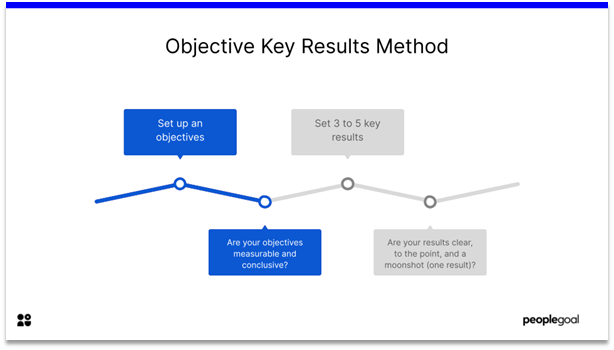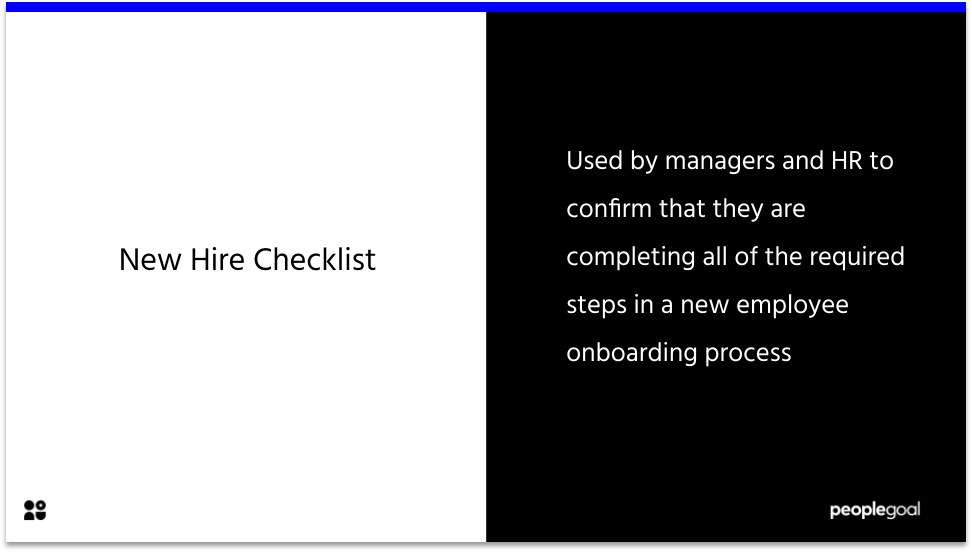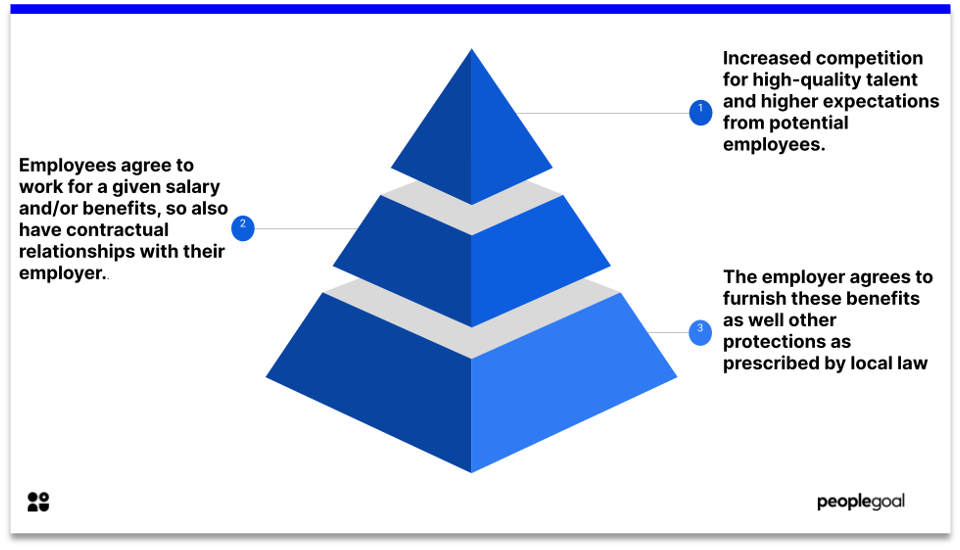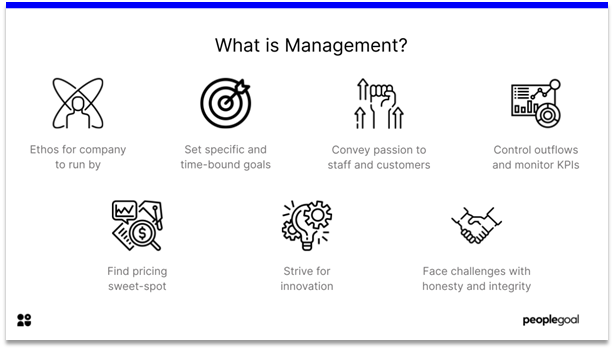OKRs stands for ‘Objectives and Key Results‘. It’s a method first used by Intel that later became the flagship tool for objective management at Google. It is also very popular in the startup world as it boosts the milestone strategy, which normally revolves around achieving scalability.
To make it work you have to set up an Objective and around the Objective you set a number of Key Results. The objectives should be measurable and conclusive rather than vague. For example, an objective can be "Achieve 100% after sale customer support". A key result (for a customer service employee as an example) is to "Eliminate daily backlog on unanswered customer emails".

The duration of the process depends on the business cycle. For a startup it can be monthly, and for a larger organization it will typically be quarterly. According to Google every employee should set no more than six OKRs otherwise he/she will be overworked. The rating they use is a scale from 0 to 1 and everyone is aiming for 60% to 70%. The idea is not to achieve 100% of your OKRs because that means that you did not set challenging targets. Also the focus should be on the Objectives and not on the grading. Another important aspect of the system is that all information is public and everyone can see other people’s goals & objectives. This way it’s much easier to identify people that can help you with your deliverables. Finally, OKR’s are not being use for promotion decision at Google.
The OKR method is not a simple as it appears and it should be applied correctly to achieve results. Below is a list of things employees should follow when setting OKRs.
- Employees should set the OKRs for themselves (and not have their managers do it).
- OKRs should be public. Everyone should be able to see what everyone else is targeting. This way everyone understands how he/she contributes to the overall company agenda, and it is also easier to get in touch with the right people when you need support.
- Set between four to six objectives with maximum three key results per objective to support them. This way you will be able to prioritize your key tasks.
- Continuous process. OKRs are a continuous process not just a one off tast at the beginning and the end of the performance cycle. Many companies fall in the trap of just setting them and never keeping track of them.

Clearly, OKRs are an effective method to achieve company objectives, but there is room for process improvement. For example, OKRs do not capture development points. Just completing goals will not develop the employees. Every objective should be linked to development points. This way the employee develops as he completes his goals and on the next cycle he would be able to pick up tasks that require extra skills. Also, the employee will understand how his tasks link to development points.
OKRs are not linked to performance reviews. Every company treats OKRs as a different, separate process. Not enough gravitas is being placed on OKRs by management when making promotions decision. Again this must change, with OKRs employees are stretched to step outside their comfort zone and set challenging targets therefore it should count towards their performance reviews.
Lastly, OKRs in some occasions place employees in a box resulting from the conclusiveness of the objectives. To avoid this employees should be able to set some OKRs that related to their areas of interest and development requirements.
You can read additional material on similar topics here:
Ready to 3x Your Teams' Performance?
Use the best performance management software to align goals, track progress, and boost employee engagement.






